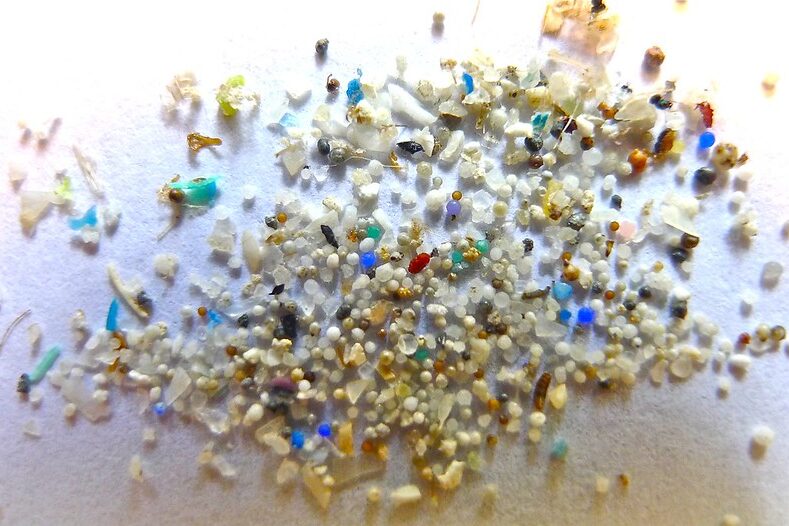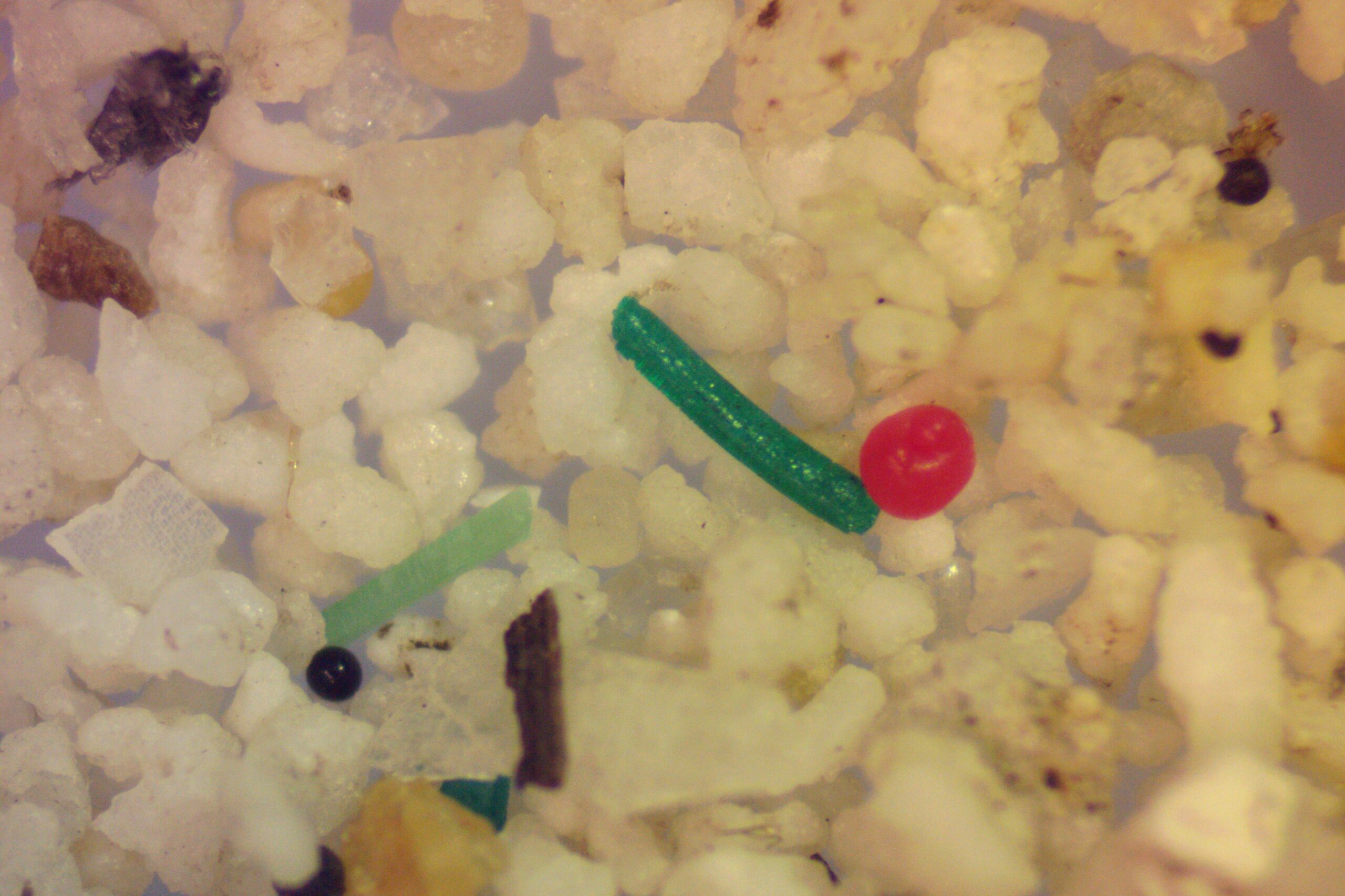1. Respiratory Issues

One of the most immediate and concerning ways microplastics are affecting human health is through their impact on the respiratory system. These tiny particles are easily inhaled, often without us realizing it, as they are present in the air we breathe. Studies show that microplastics can enter the lungs when airborne particles are inhaled, causing irritation and triggering respiratory problems, according to Archivos de Bronconeumologia. Over time, constant exposure to these particles can lead to conditions like chronic bronchitis, asthma, and even lung infections. The small size of microplastics allows them to bypass the body’s natural defense mechanisms, reaching the lower parts of the lungs where they can become lodged. This can lead to inflammation and potentially increase the risk of developing lung diseases, such as pulmonary fibrosis and other chronic respiratory issues.
Moreover, the long-term effects of breathing in microplastics may also contribute to conditions like lung cancer, as the particles can cause cellular damage. The more we expose ourselves to these particles, especially in environments where plastic pollution is rampant, the higher the chances of these respiratory problems developing. Microplastics can also be absorbed into the bloodstream via the lungs, where they travel throughout the body, further increasing the potential for harm. As awareness about the impact of air quality on our health grows, it’s becoming increasingly evident that microplastics pose a significant risk to lung health.
2. Cardiovascular Damage

Microplastics do not just affect the lungs; they can also have a profound impact on the cardiovascular system. Once these tiny particles enter the bloodstream, they can travel through the circulatory system, depositing in various organs, including the heart, according to Health Harvard. Evidence is emerging that suggests long-term exposure to microplastics can lead to inflammation and the development of atherosclerosis—a condition where plaque builds up in the arteries, restricting blood flow. This can put individuals at a higher risk for heart attacks, strokes, and other serious cardiovascular diseases. Microplastics have also been linked to an increase in blood pressure, which further compounds the risk of cardiovascular events.
The damage caused by microplastics can also disrupt normal vascular function and alter the endothelial lining of blood vessels. This can make blood vessels less efficient in transporting oxygen and nutrients throughout the body, leading to broader health complications. Over time, this microscopic pollution inside our circulatory system might contribute to the development of blood clots or exacerbate existing heart conditions. Cardiovascular experts are warning that as the presence of microplastics in the environment increases, it could lead to a rise in cardiovascular diseases linked directly to this kind of pollution.
3. Hormonal Disruption

Another area where microplastics are causing concern is their impact on the endocrine system. Many microplastics contain chemicals known as endocrine-disrupting chemicals (EDCs), which can interfere with the body’s natural hormone production. These chemicals can mimic hormones or block them entirely, leading to a variety of hormonal imbalances. For example, microplastics may interfere with thyroid hormones, leading to conditions like hypothyroidism or hyperthyroidism, which affect metabolism and energy levels, according to PubMed Central. Similarly, they have been shown to affect estrogen and testosterone production, potentially contributing to fertility issues and reproductive health disorders.
The long-term exposure to these hormone-mimicking chemicals can have particularly damaging effects on pregnancy and fetal development. Microplastics have been linked to birth defects, low birth weight, and developmental delays in babies. Research has shown that endocrine-disrupting chemicals can cross the placental barrier, impacting the fetus even before birth. In both men and women, microplastics may also contribute to conditions such as early menopause, increased menstrual cycle irregularities, and testicular problems, potentially affecting overall reproductive health.
4. Immune System Compromise

Our immune system is designed to protect us from harmful pathogens and toxins, but it may be struggling in the presence of microplastics. These foreign particles are recognized by the body as potential threats, prompting the immune system to launch a response. Unfortunately, prolonged exposure to microplastics can lead to chronic inflammation, a condition where the immune system remains in a constant state of alert. Chronic inflammation has been linked to a variety of autoimmune diseases, including rheumatoid arthritis, lupus, and multiple sclerosis. Microplastics can also exacerbate allergies and asthma by continuously triggering immune reactions.
In some cases, microplastics may even suppress the immune system, making the body more vulnerable to infections and other diseases, according to PubMed Central. By entering the bloodstream, these particles may interfere with white blood cell production and the body’s ability to fight off illnesses. The immune system overload caused by the constant presence of foreign particles like microplastics might also increase the likelihood of developing cancer or other long-term health problems. Over time, the body’s inability to properly cope with the influx of these foreign substances can contribute to a weakened immune system and greater susceptibility to diseases.
5. Digestive System Disturbances

The digestive system is another area of concern when it comes to the health impacts of microplastics. When ingested, microplastics can cause significant damage to the gastrointestinal tract. These particles can accumulate in the stomach or intestines, leading to irritation, ulcers, and inflammation of the digestive lining, according to McGill. In some cases, the presence of microplastics in the digestive tract can interfere with nutrient absorption, leading to deficiencies and digestive issues such as bloating, gas, or constipation. The impact of microplastics on gut health is still being studied, but the potential for long-term gastrointestinal disturbances is a major concern.
Beyond the irritation they cause in the digestive system, microplastics can also disrupt the gut microbiome—the community of bacteria that plays a crucial role in digestion, immunity, and overall health. The introduction of foreign particles can alter the balance of these beneficial microbes, leading to an imbalance known as dysbiosis. Dysbiosis has been linked to several health issues, including irritable bowel syndrome (IBS), inflammatory bowel disease (IBD), and food sensitivities. The more microplastics are ingested, the greater the chance of long-term disruption to the digestive system, further highlighting the need to reduce exposure to these pervasive pollutants.
6. Brain Function and Development

Research into the effects of microplastics on brain health is still in its early stages, but early findings are concerning. Microplastics, especially those that contain toxic chemicals like bisphenol A (BPA), can affect the brain by crossing the blood-brain barrier. Once inside, these particles can cause neuroinflammation and disrupt normal brain function, leading to problems like memory loss, reduced cognitive ability, and behavioral changes. In children, exposure to microplastics during critical periods of brain development may lead to developmental delays and learning disabilities.
In addition to their direct impact on brain tissue, microplastics have been shown to affect the nervous system by interacting with the production of neurotransmitters, the chemicals responsible for communication between neurons. Disruption in neurotransmitter production can lead to mental health conditions like anxiety, depression, and mood swings. Long-term exposure to these particles might increase the risk of neurodegenerative diseases, such as Alzheimer’s and Parkinson’s, further highlighting the potentially devastating impact that microplastics can have on brain health.
7. Cancer Risk

Another grave concern surrounding microplastics is their potential to contribute to the development of cancer. Many plastics contain carcinogenic substances like styrene, phthalates, and BPA, all of which have been linked to various forms of cancer. When microplastics enter the body, these harmful chemicals can leach out and accumulate in organs, increasing the risk of tumors and genetic mutations. Long-term exposure to these chemicals has been associated with breast cancer, prostate cancer, and liver cancer. Since microplastics are pervasive and are found in food, air, and water, the risk of accumulating these substances in the body over time is a significant concern for public health.
Additionally, microplastics have been found to induce cellular stress, which can trigger abnormal cell growth and the formation of tumors. Research is still ongoing, but scientists are increasingly concerned about the bioaccumulation of harmful chemicals from microplastics and their contribution to the development of cancerous growths. The cumulative impact of these tiny particles over years or decades could potentially lead to the emergence of malignant cells, further underscoring the urgent need to address the environmental crisis that is causing their proliferation.
8. Skin Irritation and Allergic Reactions

Microplastics are not only ingested or inhaled but can also come into direct contact with the skin. These tiny particles can cause significant skin irritation, especially for those with sensitive skin or allergies. In some cases, exposure to microplastics can lead to dermatitis, a condition characterized by red, inflamed, and itchy skin. The rough surface of some microplastics can damage the skin’s protective barrier, increasing the risk of infections and further irritation. Individuals with pre-existing skin conditions like eczema or psoriasis may experience flare-ups as a result of microplastic exposure.
In addition to irritation, there is growing concern about the absorption of toxic chemicals found in certain microplastics. These chemicals can enter the skin and potentially be absorbed into the bloodstream, leading to broader health concerns, particularly with prolonged or frequent exposure. The effects of long-term skin contact with microplastics are still being studied, but early evidence suggests that they may cause serious allergic reactions, hives, and even skin cancer over time.
9. Decreased Fertility

Emerging research suggests that microplastics can have a detrimental effect on fertility. Endocrine-disrupting chemicals found in plastics can interfere with hormonal regulation in both men and women, reducing the ability to conceive. Studies have shown that these chemicals can lead to ovarian dysfunction, low sperm count, and reduced semen quality, all of which contribute to fertility problems. Women may experience delayed ovulation or egg quality deterioration, while men can face erectile dysfunction or sperm motility issues, making it harder for them to start families. The link between microplastics and fertility is becoming more evident as studies continue to explore the impact of chemical pollutants on reproductive health.
For women trying to conceive, exposure to microplastics could have a profound impact on pregnancy outcomes as well. Research indicates that microplastics can accumulate in the reproductive organs, leading to increased miscarriage rates and complications during pregnancy. The presence of harmful chemicals in microplastics is likely to interfere with the delicate hormonal balance necessary for healthy reproduction, further exacerbating concerns over how these pollutants may affect future generations.
10. Impact on Child Development

Children are particularly vulnerable to the harmful effects of microplastics due to their still-developing bodies and organs. Studies have shown that exposure to microplastics during critical developmental stages can interfere with cognitive growth, neurodevelopment, and even behavioral patterns. The chemicals found in many plastics, such as BPA, phthalates, and styrene, are known to disrupt the endocrine system, which plays a crucial role in the development of the brain and nervous system. When children are exposed to these toxic substances, whether through ingestion, inhalation, or skin contact, it can lead to a range of developmental issues. Research has shown that these exposures can contribute to learning disabilities, speech delays, and even autism spectrum disorders.
Additionally, early exposure to microplastics has been linked to an increased risk of attention-deficit/hyperactivity disorder (ADHD) and other behavioral disorders. Children’s immune systems are also still maturing, making them more susceptible to the long-term health consequences of microplastic exposure. Furthermore, microplastics have been found in the placenta, which means that pregnant women who are exposed to plastics might inadvertently affect their unborn children. This underscores the urgency of reducing environmental plastic pollution to protect the health and development of future generations. The cumulative impact of these exposures could have significant effects on a child’s ability to learn, develop, and thrive in the long run.


